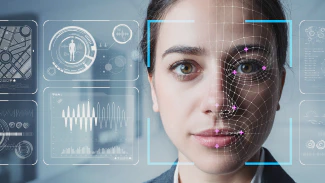Innovative Technology in Hospital Security

Explore the latest advancements in technology designed to enhance security measures in hospital settings.
Panic Buttons For Staff Members
Panic buttons are an essential tool for ensuring the safety and security of staff members in hospitals. These buttons are typically installed in strategic locations throughout the facility, allowing staff members to quickly and discreetly call for help in case of an emergency. When activated, panic buttons can alert security personnel and trigger an immediate response to the situation at hand. This technology provides staff members with a sense of security and peace of mind, knowing that help is just a button press away.
In addition to their role in emergency situations, panic buttons can also be used to address other security concerns in hospitals. For example, they can be used to report suspicious activities or potential threats, allowing security personnel to quickly investigate and take appropriate action. Panic buttons are a valuable tool in enhancing the overall security and well-being of staff members in hospital settings.
Enhancing Access Control Systems
Access control systems play a crucial role in ensuring the security of hospital facilities. These systems use various technologies, such as key cards, biometric identification, and PIN codes, to control access to different areas of the hospital. By implementing advanced access control systems, hospitals can enhance their security measures and prevent unauthorized individuals from entering restricted areas.
One of the key benefits of modern access control systems is the ability to track and monitor access to different areas of the hospital. This allows security personnel to easily identify any suspicious or unauthorized activities. In addition, access control systems can be integrated with other security technologies, such as video surveillance systems, to provide a comprehensive security solution.
By enhancing access control systems, hospitals can improve the overall security of their facilities and protect the well-being of their staff members and patients.
Implementing Video Surveillance Solutions
Video surveillance is an essential technology for enhancing security in hospital settings. By installing surveillance cameras throughout the facility, hospitals can monitor and record activities in different areas, deterring potential criminals and providing valuable evidence in case of incidents.
In addition to deterring crime, video surveillance systems can also be used to address other security concerns in hospitals. For example, they can be used to monitor high-risk areas, such as emergency rooms and psychiatric units, to ensure the safety of staff members and patients. Furthermore, video surveillance systems can be integrated with other security technologies, such as access control systems and alarm systems, to provide a comprehensive security solution.
Overall, implementing video surveillance solutions can significantly enhance the security measures in hospital settings, providing a safer environment for both staff members and patients.
Leveraging Artificial Intelligence for Threat Detection
Artificial intelligence (AI) has revolutionized the field of threat detection in hospital security. By leveraging AI-powered algorithms, hospitals can analyze large amounts of data in real-time and identify potential threats or suspicious activities. This technology can help security personnel to proactively respond to security incidents and prevent potential harm.
AI-powered threat detection systems can be applied to various aspects of hospital security, such as monitoring access control systems, video surveillance footage, and even social media platforms for potential threats. By automatically analyzing patterns and anomalies, these systems can identify suspicious behaviors or activities that may go unnoticed by human operators.
By leveraging artificial intelligence for threat detection, hospitals can enhance their security measures and improve their ability to prevent and respond to security incidents.
Utilizing Biometric Identification for Personnel Authentication
Biometric identification is a cutting-edge technology that can greatly enhance personnel authentication in hospital settings. By using unique physical or behavioral characteristics, such as fingerprints, iris patterns, or facial features, hospitals can ensure that only authorized individuals have access to sensitive areas.
One of the key advantages of biometric identification is its accuracy and reliability. Unlike traditional authentication methods, such as key cards or PIN codes, biometric data cannot be easily forged or stolen. This makes biometric identification highly secure and minimizes the risk of unauthorized access.
Furthermore, biometric identification systems can also improve the efficiency and convenience of personnel authentication. Staff members can quickly and easily authenticate themselves by simply presenting their biometric data, eliminating the need for carrying multiple access cards or remembering complex passwords.
By utilizing biometric identification for personnel authentication, hospitals can enhance the security of their facilities and streamline the access control process.
Integrating Emergency Response Systems
Integrating emergency response systems is crucial for ensuring a prompt and effective response to emergencies in hospital settings. These systems can include various technologies, such as alarms, communication devices, and automated notifications, to quickly alert security personnel and relevant stakeholders in case of an emergency.
By integrating emergency response systems, hospitals can improve their emergency preparedness and response capabilities. For example, in the event of a fire or a medical emergency, these systems can automatically trigger alarms, notify the relevant personnel, and provide real-time updates on the situation. This allows for a coordinated and efficient response, minimizing the potential impact and ensuring the safety of staff members and patients.
In addition, emergency response systems can also be integrated with other security technologies, such as video surveillance and access control systems, to provide a comprehensive security solution.
By integrating emergency response systems, hospitals can enhance their overall security measures and create a safer environment for everyone within the facility.
For more about the latest innovations in hospital security, visit 911cellular.com.
Tags: Hospital safety


